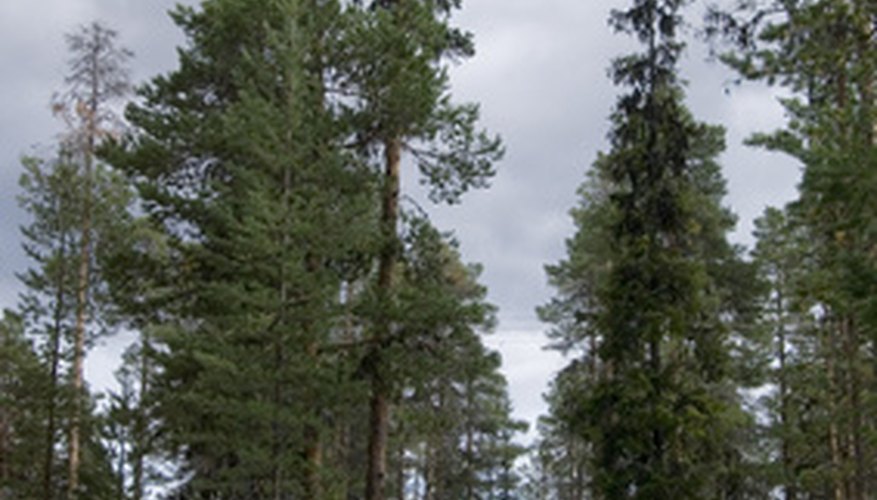The taiga, or boreal forest, is an expanse of dry, cold climate located at high latitudes just below the North Pole. The largest biome in the world, the taiga expands through most of Canada, Scandinavia, Russia and even parts of Japan. Because of its long winters and low temperatures, most plant life in the taiga consists of lichen, moss, and deciduous and evergreen trees, several of which are endangered from lack of protection efforts.
Balsam Fir
The balsam fir is one of many coniferous trees in the taiga that have been ravaged by excessive logging, and care must be taken to conserve these trees, which can take years to grow back due to the short growing season. The balsam fir is a North American native that grows from Alberta to Newfoundland, down to Michigan and even the mountains of Virginia. With its dense, green needles, lightweight wood and pleasing conical shape, the balsam fir is a common Christmas tree. It is also used for pulp, paper and light construction wood.
- The balsam fir is one of many coniferous trees in the taiga that have been ravaged by excessive logging, and care must be taken to conserve these trees, which can take years to grow back due to the short growing season.
Widespread fires are common to the taiga, often caused by lightning and the dry climate. These fires, though potentially beneficial to propagating plant growth cycles, such as for certain lichen species, do a great deal of damage to the balsam fir. Because of its shallow roots, its thin, resinous bark, and seeds that lack endospermic tissue, the balsam fir is the least fire-resistant of all evergreen trees and can take up to 50 years to grow after a fire.
Lingonberry Plant
The lingonberry plant (Vaccinium vitis-idaea) is a small shrub that bears wild, red berries and pinkish, bell-shaped flowers. A well-known fruit in Scandinavia and central and eastern Europe, the lingonberry plant is native to the boreal forests, and its berries are often used in the form of jam, compote or syrup. They are very common in Sweden, where they are a staple in cuisine. Seldom cultivated, the lingonberry is a wild plant that is mostly picked out of its natural habitat. In some areas picking lingonberry is legal; however, poaching still persists as a serious threat to these plants, as many taiga wildlife, such as bears, foxes, birds and insects, rely on the lingonberry for food.
- The lingonberry plant (Vaccinium vitis-idaea) is a small shrub that bears wild, red berries and pinkish, bell-shaped flowers.
- A well-known fruit in Scandinavia and central and eastern Europe, the lingonberry plant is native to the boreal forests, and its berries are often used in the form of jam, compote or syrup.
Siberian Dwarf Pine
Also known as the creeping pine or the Japanese stone pine, the Siberian Dwarf Pine is a shrubby tree that grows in Siberia and the colder northern regions of Japan. Despite its name, the Siberian Dwarf Pine can grow to be large, and like many pines, it is a sought-after species by the lumber industry. Unfortunately, clear-cutting practices by lumber industries have been extensive and destructive, leaving forests sparse and even more vulnerable to fires.
